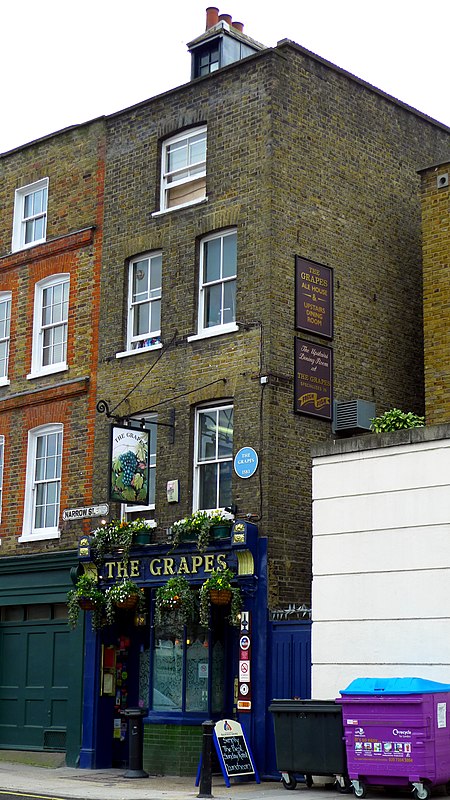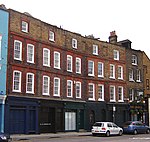The Grapes, Limehouse
1583 establishments in EnglandCommercial buildings completed in 1720Grade II listed buildings in the London Borough of Tower HamletsGrade II listed pubs in LondonLimehouse ... and 1 more
Pubs in the London Borough of Tower Hamlets

The Grapes is a Grade II listed public house situated directly on the north bank of the Thames in London's Limehouse area, with a veranda overlooking the water. To its landward side, the pub is found at number 76 in Narrow Street, flanked by former warehouses now converted to residential and other uses.The Grapes is owned in partnership by the actor Sir Ian McKellen, the theatre and film director Sean Mathias, and Evgeny Lebedev, publisher of the Evening Standard newspaper.
Excerpt from the Wikipedia article The Grapes, Limehouse (License: CC BY-SA 3.0, Authors, Images).The Grapes, Limehouse
Blyths Wharf, London Limehouse
Geographical coordinates (GPS) Address Nearby Places Show on map
Geographical coordinates (GPS)
| Latitude | Longitude |
|---|---|
| N 51.508780555556 ° | E -0.034075 ° |
Address
Blyths Wharf 16
E14 8BF London, Limehouse
England, United Kingdom
Open on Google Maps









